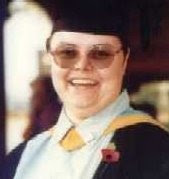The Mouse and His Child - Russell Hoban
I cannot recall, now, where I saw a reference to Russell Hoban's The Mouse and His Child a few weeks ago that prompted me to go hunting for it at the library. It's the story of two clockwork mice, a father and son, who dance together. When the key in the father's back is wound up, he dances in a circle, swinging his son up and down in the air. They begin life in a warm toy shop at Christmas, in the company of other clockwork toys. The mouse child longs for the aristocratic lady elephant to be his mother, the seal who balances a ball on her nose to be his sister, and for them all to live in the elegant dolls house on the shop counter. But they are sold to a family, in which the parents refuse to allow the children to play with the toys; instead they are only brought out at Christmas. One night, a few years after they are sold, the mouse child is overcome with longing for the elephant, the seal and the dolls house, and he begins to cry, breaking the most important rule of clockwork. The family cat is startled by the noise and knocks a vase over onto the toy mice, breaking them. They are thrown out with the rubbish, but this is just the start of their quest for a family and a home. A passing tramp finds them, repairs them to the extent that they can walk (but no longer dance), and sets them on their way with the injunction: "Be tramps". Unfortunately they then run into Manny Rat, a tyrannical crook, who uses clockwork toys as slave labour and doesn't hesitate to smash those who get out of line. The mice escape him with the intervention of a fortune-telling frog, who frightens Manny Rat with a terrible prophecy that links the fates of the mice to the rat: "A dog shall rise; a rat shall fall." What follows is a series of encounters in which the mice, particularly the child, develop a personal philosophy, that eventually leads them to achieve the mouse child's dream.
This book is quite gruesome in places - with a number of violent acts being perpetrated against the various characters. I did wonder, as I was reading it, just what child readers make of the combination of philosophy and violence.


6 comments:
I've never met anyone who read this book as a child, and wonder if it's one of those that adults like and appreciate more than children? I love it (hence the subtitle "the last visible dog" on my own blog) but agree with you that it is dark and often disturbing and sad in many ways...
I wonder if it's worth doing a quick "poll" of Children's lit. readers to see if any of them did read it as a child ? I'd be interested to hear from just one child reader, to know what they made of it.
good idea!
Expect a follow up comment here once I get some feedback...
I never read the book, but as a young child I was exposed to the animated feature of the same name. I had nightmares for over a year concerning the violence and off-screen deaths of characters. It's been 20 years since I've seen it, and I'm afraid to read the book in spite of my curiosity.
I also saw the animated movie as a child and was terrified of the death scenes and general disturbing quality of the movie. My sister feels the same way. It has caused me to be intrigued, but at the same time afraid and hesitant to read the book.
Post a Comment